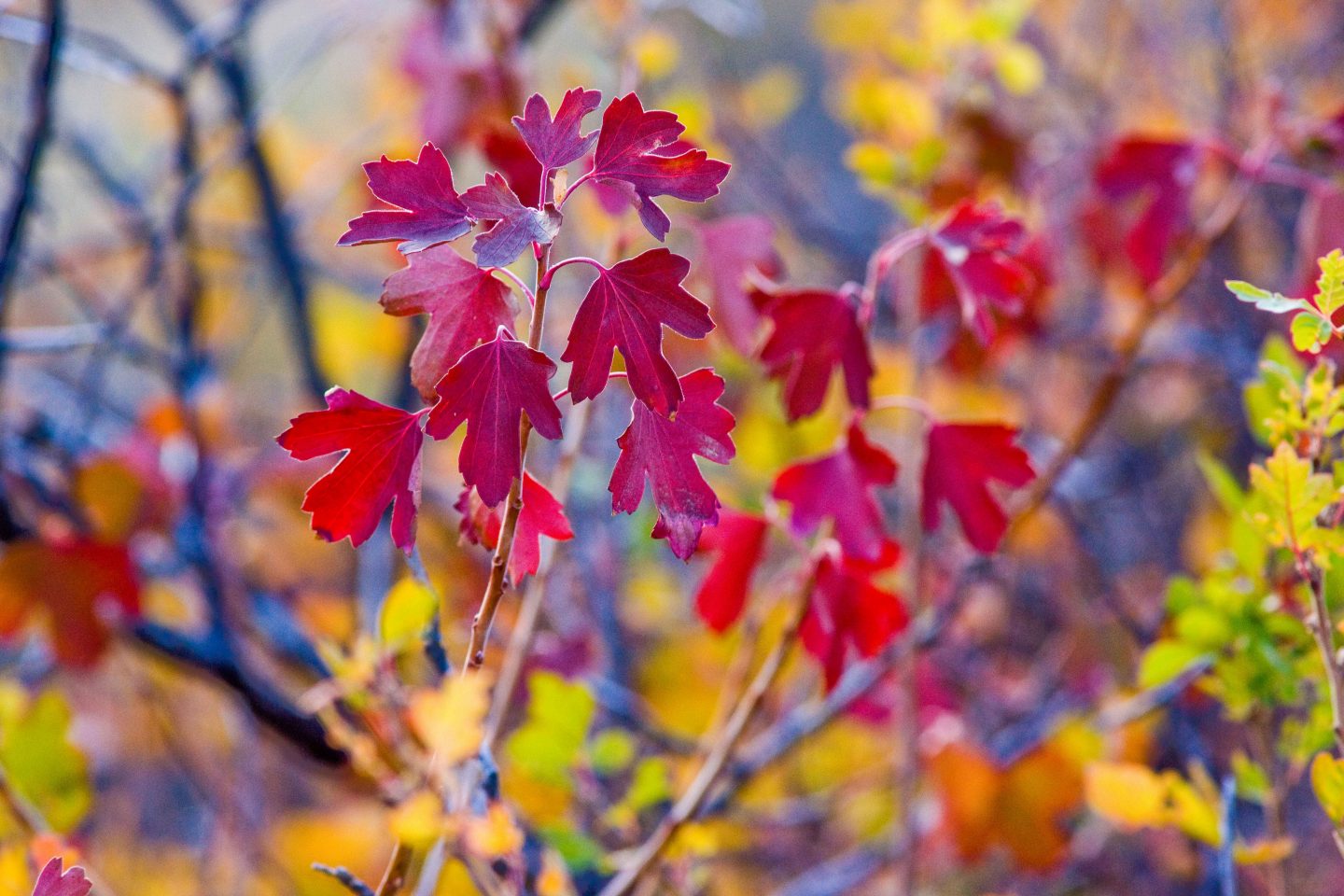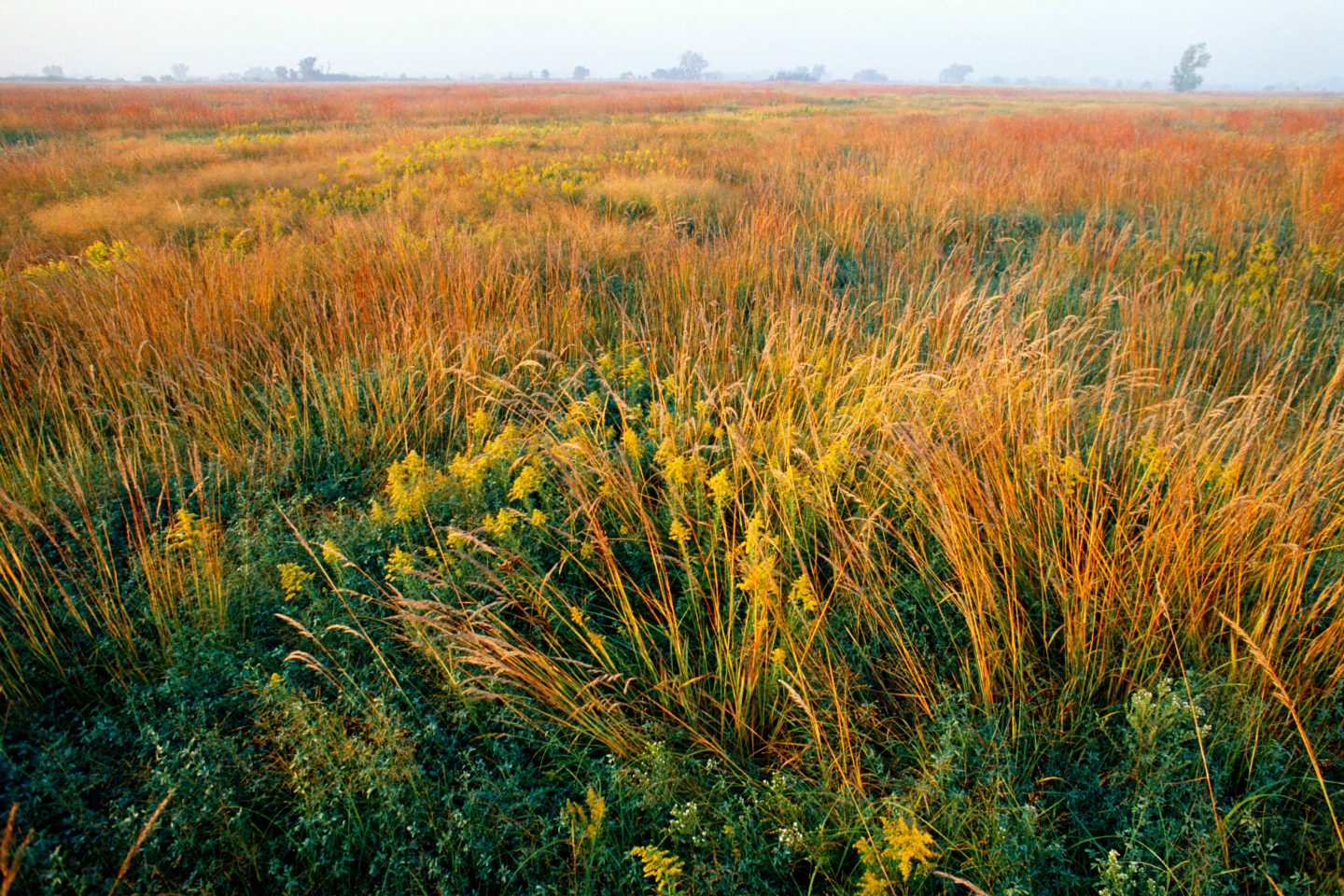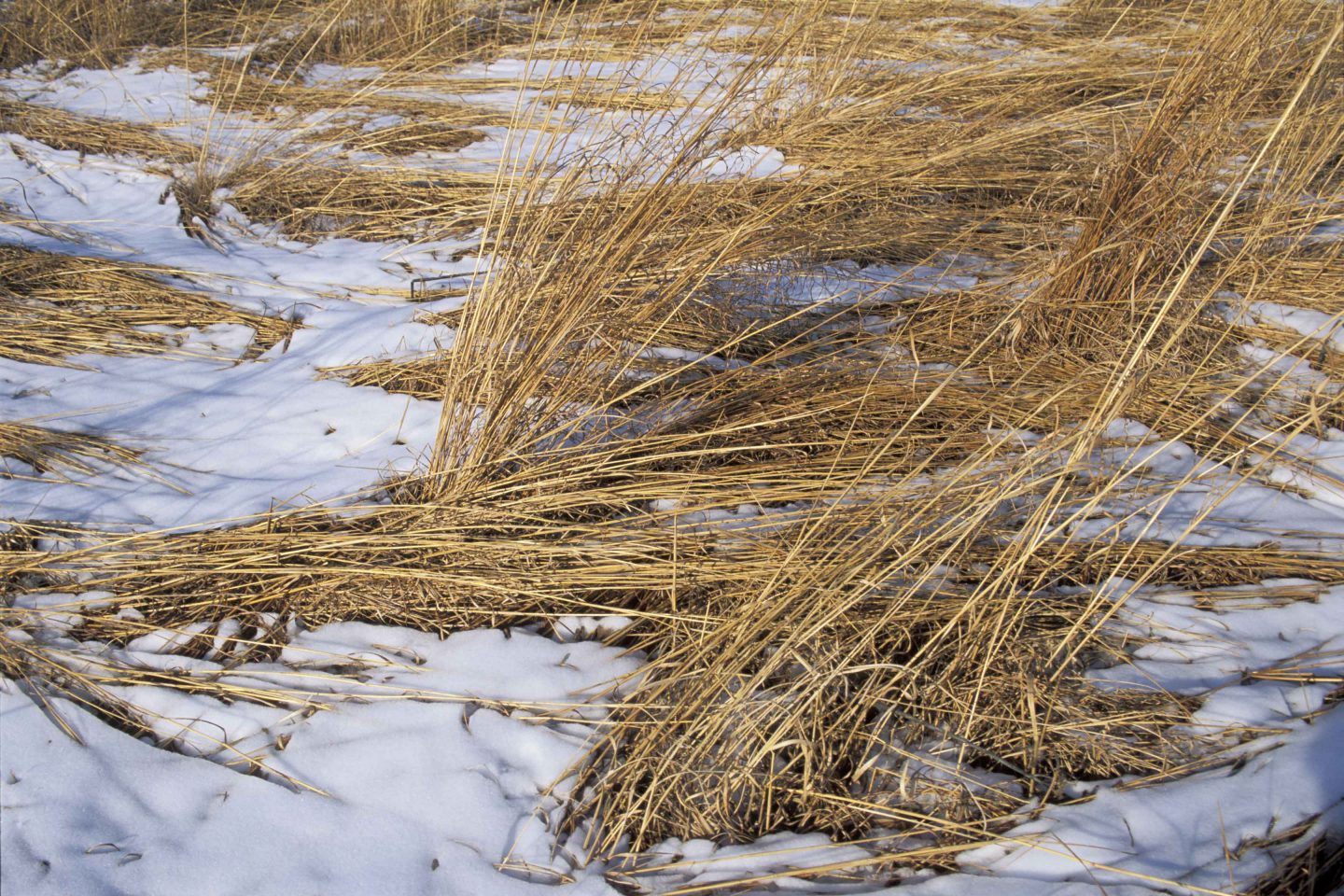
By Monica Macoubrie, Wildlife Education Specialist
When fall rolls into Nebraska, it’s not just people grabbing cozy sweaters and pumpkin spice lattes—our native prairie plants are busy getting ready for winter, too! These tough plants have a toolkit of tricks to handle the changing seasons, ensuring they survive the chilly months and come back strong in the spring.
The Mighty Roots
If prairie plants had a superpower, it would undoubtedly be their incredible root systems. Picture big bluestem or purple coneflower—while we admire the foliage and blooms above ground, the real action is happening beneath the surface. The plants’ roots dig deep into the soil, sometimes reaching down 10 feet or more — they’re like nature’s underground skyscrapers.
These roots don’t just anchor the plant. During the summer, they work tirelessly to gather nutrients and water, soaking up everything they can while the days are long and the sun shines bright. When fall arrives, it’s time for a serious shift. The plant transitions from growth mode to survival mode. All that energy that was once dedicated to maintaining those beautiful stems and leaves are now redirected to the roots. Prairie plants begin hoarding nutrients to prepare for their long winter’s “nap,” storing sugars and starches deep underground where the cold can’t touch them.
While the aboveground parts may appear to be shutting down—turning brown, wilting and seemingly “dying”—the plant is secretly thriving below the surface.

Seed Scattering
When fall hits, prairie plants go full-on into reproduction mode, and they have some clever ways to spread the next generation across the landscape. But instead of just tossing their seeds randomly, these plants have mastered creative tactics to make sure their seeds have the best shot at finding the perfect place to grow.
Have you ever noticed those fluffy, feather-light seeds on plants such as goldenrod? It’s not just for looks—those fluffy, little “parachutes” are key to their strategy. The seeds are designed to catch the wind, so they can float and soar across the prairie, landing far from the parent plant to a new location.
But wind isn’t the only trick. Some prairie plants are downright sneaky about getting their seeds out there. Take stickseed, for example. Its seeds are tiny hitchhikers, equipped with sticky barbs that latch onto the fur and clothing of passing animals and humans. These seeds use unsuspecting critters as their personal cab service, getting a free ride to a new home where they’ll eventually drop off and, hopefully, settle in to grow.

Then there’s wild bergamot and other plants that are a little more patient. Instead of sending their seeds out to sprout right away, they go into dormancy. These smart plants know that Nebraska winters can be harsh, so they make sure their seeds don’t germinate too early and risk freezing. The seeds tuck away underneath the soil or in leaf litter and wait for the perfect combination of warmth and moisture the following spring to wake them up.
Some plants even have seeds that require a little extra help from fire, frost or digestion to kickstart their growth. For example, certain prairie plants need their seeds to pass through the digestive system of an animal, such as a turtle or a squirrel, before they can germinate, a process that breaks down the tough seed coat and gives them a head start when they land in, well, fertilizer. It’s like a two-for-one deal—dispersal and a nutrient boost!
Leaf Drop and Dormancy
Dropping leaves is another component of prairie plants’ strategy to survive the colder, darker months. By shedding their leaves, they stop wasting precious energy and water on parts of the plant they don’t need during winter. Also, with fewer leaves, there’s less surface area for water to evaporate from, so they can hold onto as much moisture as possible when the dry, cold air hits.
Flexible and Frost Ready
Prairie plants are truly Nebraska tough—they’ve got what it takes to handle whatever wild weather comes their way. As winter rolls in, these plants don’t just stand there helpless in the face of snowstorms and freezing winds. Grasses like little bluestem and switchgrass are the prairie’s flexible, wind-proof warriors. Their stems aren’t stiff and brittle like you might expect. Instead, they can bend and sway with ease, no matter how hard the wind blows or how heavily the snow piles on.
But that’s not all—some prairie plants are equipped with antifreeze. Plants like blue grama produce special chemicals in their cells that act like a natural antifreeze, protecting them from temperatures that would normally turn most plants to ice. These chemicals help keep the water inside the plant cells from freezing solid, which is crucial because when water freezes, it expands and can cause cells to burst.

Plants Helping Wildlife
Prairie plants aren’t just focused on their own survival during the fall—they’re also providing crucial support to local wildlife. As the days grow shorter and colder, birds and small mammals rely on the seeds from plants like milkweed and asters to stock up for winter. These seeds are a vital food source, helping animals build up their energy reserves for the long, chilly months ahead.
But it’s not just birds and small mammals that benefit. Migrating pollinators, such as monarch butterflies, flock to the late-season nectar produced by these plants. As they prepare for their epic journeys to warmer climates, these pollinators find much-needed fuel in the blooms of goldenrod and wild bergamot. It’s a win-win situation: The plants get pollinated, and the butterflies get a tasty energy boost to help them along their way.
Even after prairie plants have gone dormant and their vibrant blooms fade, they continue to play a vital role in the ecosystem. The dried stalks and foliage of these plants create cozy shelters for small animals like rabbits and various overwintering insects. These natural hideaways provide protection from predators and harsh weather, making them essential havens for wildlife as they hunker down for the winter.

Nebraska’s native prairie plants are the ultimate survivors. With their deep roots, smart seed strategies, flexible structures and winter-proof tricks, they’ve mastered the art of fall preparation. While they may look like they’re winding down for the season, these plants are busy behind the scenes, making sure they’ll come back strong when spring rolls around. So next time you’re wandering through the prairie in the fall, remember that these plants aren’t just pretty—they’re masters of survival, working hard to ensure Nebraska’s prairie ecosystem stays healthy and vibrant, no matter the season.
